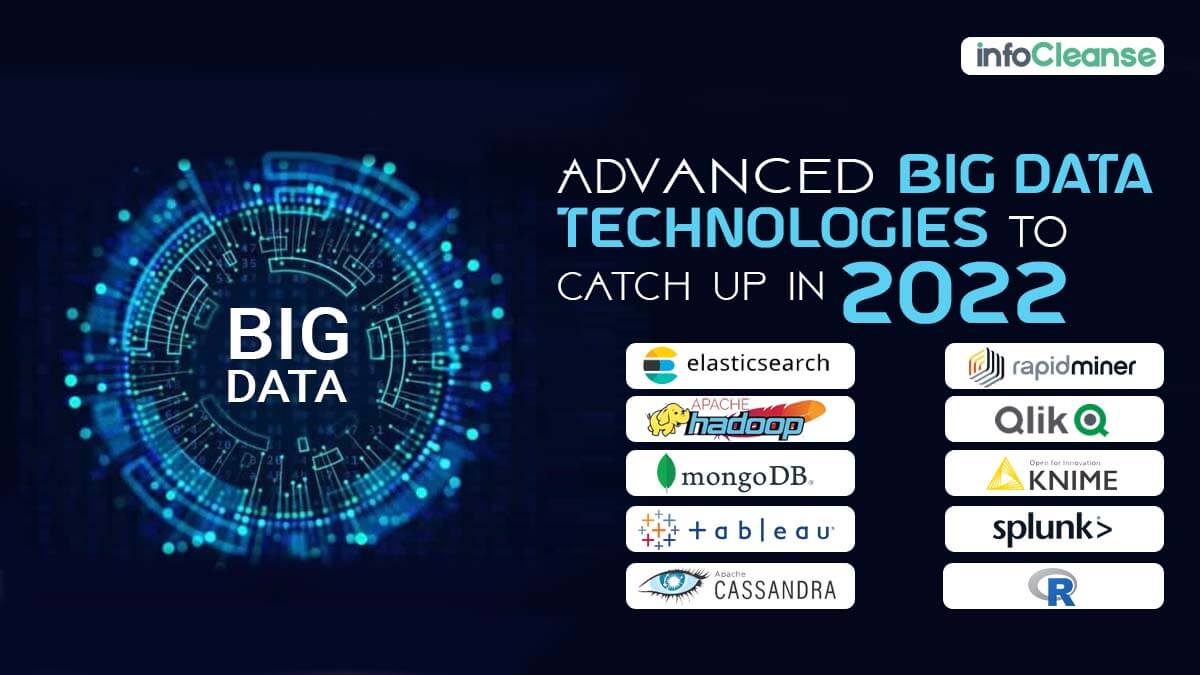
Everywhere you look, you will find grids of data being engulfed into this world. It is evolving at a rapid pace which can reap massive ROI in the long run. Therefore, the global analytics market for data is valued at $68 billion in four years.
It alludes to a precedent increase of 30% in the coming years.
Due to this, people are swarming in to witness the rise of big data. But what are big data technologies, and what are the ten most advanced ones to catch up on?
Are you intrigued? Read on to find out!
In simple terms, big data are larger data sets. These need computational analysis when you want to reveal the patterns based on specific data aspects.
Did you know that in 2020, there were 1.7 megabytes of data produced every second? How do you control that?
Enter big data technologies!
The variety, volumes, and velocity are the three V’s of big data. These data sets tend to have complex and new-age data sources.
Due to this, the Government finds it a necessary tool for operations.
Ideally, data sets from big data have more volume than the traditional ones. Therefore, the conventional processing software cannot compute or manage them.
Big data technologies made it easier for people to tackle big problems related to the grid. You will find extensive data in industries like:
Why do industry professionals love to use big data? The simple answer is that it helps with complex data:
This advanced world is in dire need of these big data technologies. Otherwise, the global data software will crash! Due to this, companies are creating new technologies that can help with data accuracy.
Supported languages: Python, Perl, PHP, Go, Java, Ruby, etc.
It is an analytics engine that works on an open search distributed interface. Therefore, it will include data like:
Apart from that, this technology has been built on Apache Lucene. This library is known for its insane speed, distributed nature, scalability, and REST APIs.
Supported languages: Perl, Python, C++, PHP, and R
It is an open-source framework that works as a top-rated data platform. With this technology, you can use unstructured data by:
It was developed and eventually deployed by Java. Consequently, it has influenced digital media to a great deal and accepted modernization.
Supported languages: Scala, Node.js, C#, Python, Go, etc.
This technology is a document-oriented and distributed database. The data management operations you can perform are with:
Due to this, application developers consider it a friendly software. Moreover, it has a document library like JSON, which is flexible and has dynamic schemas.
Supported languages: C++, Java, C, Python 2.
It is one of the best big data technologies which has connections with different open-source databases. With it, you can harness:
It houses 250 applications and real-time solutions to issues. Furthermore, you can moderate the extensive data operations quickly with this.
Supported language: SQL
It is a free, robust, and open-source technology accepted by many. Moreover, it is a database management system that allows wide column storage of distributed NoSQL.
It can handle:
Using this, you will not witness any risk or failure during the server uptimes.
Supported languages: English and Japanese.
This big data platform is a top-notch technology that can deliver transformative business insights for numerous industries. With this, you can harness a pivotal upscaling role in your company’s:
Ideally, researchers and people with minimal programming knowledge utilize this for numerous tasks. Moreover, it is compatible with iOS, NodeJS, Android, and more.
Supported languages: Numerous human dialects
With this software, you can have the following in your data association:
Everything integrated into this technology will automatically align to offer better results. In addition, data analysts can predict market trends using embedded analysis and predictiveness in this technology.
Due to this, industries can harness valuable insight to initiate better workflows.
Supported languages: Java
It is one of the best big data technologies based on Eclipse. It offers an open-source platform with features like:
Similarly, it can integrate numerous data mining and machine learning components through the “Lego of Analytics” process.
Supported languages: SPL, Python, C++, etc.
This platform uses its features to transform machine-generated data to times series events. With this, you can answer business and operational problems in real-time. Moreover, it has a unique language called SPL which acts as the backbone for the platform.
It can help you find answers related to complex machine data.
This programming language can read statistical graphics and help with computing. Moreover, it acts as a big data software because it can offer statistical techniques on:
Along with this, it offers extensible techniques for graphical problems. It is indeed one of the most powerful big data software in existence.
As you can see, there are numerous big data technologies with intriguing platforms being harnessed by industries. Did you know that big data is playing a crucial role in enhancing the B2B marketing scene?
As Wei Li, Vice President of Intel stated,
“Big data and its associated buzz words such as deep learning, machine learning, and artificial intelligence are becoming more sophisticated over time. We are yet to see more potential beyond retail trend analyses, fraud detection devices, and self-driving cars.”
Indeed, big data will help change the ecosystem of such software and enhance user experiences.
Enterprises today navigate a complex business landscape combined with rapid technological evolution and fierce competition.…
In the ever-evolving B2B ecosystem, staying ahead of the curve is becoming a matter of…
From time immemorial, lawyers have played a crucial role in shaping our social fabric. With…
A pioneer in the automotive industry, the USA was the first country in the world…
The global software spectrum is so diverse and versatile that there is never any dearth…
What is the first thing that crosses your mind while visualizing a healthcare facility? The…